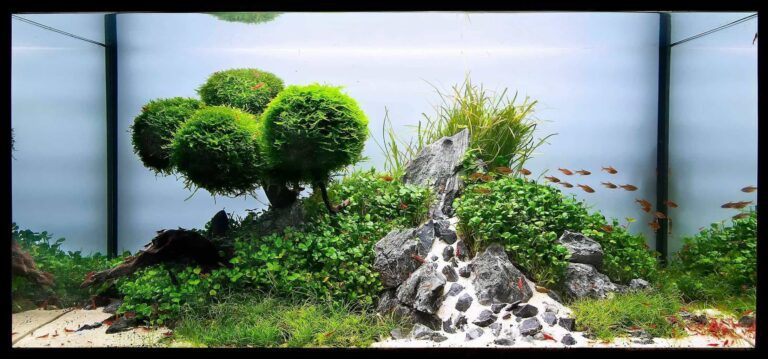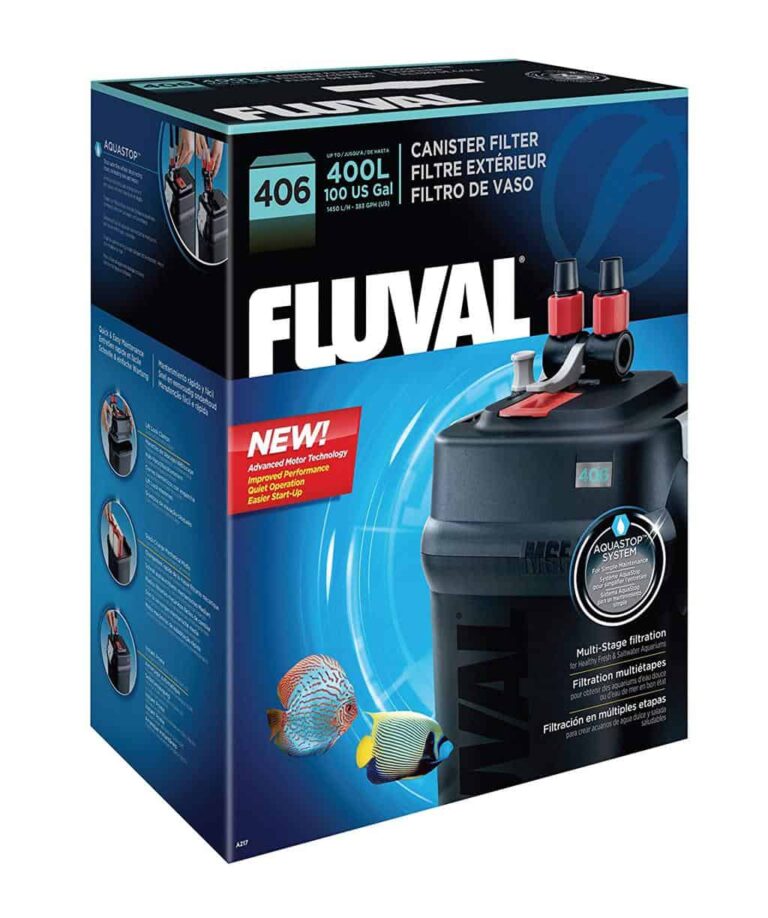When you begin your aquarium career, you might be weighing the value and usefulness of different types of filters. Inevitably you would face the question, “Canister filter vs. sump, which is a better option?”
Frankly speaking, even experienced aquarium owners will also face difficulties in choosing between the sump and canister filter. Even I was awe-struck between these two filtration mechanisms when I had to shift from the power filter.
I researched the internet and talked with my fellow aquarists to know the advantages and disadvantages of these two filters. I am putting all my collected information on the canister filter and sump to illuminate your thoughts on them.
My discussion will include the definition, working procedure along with the pros and cons of both filters. Finally, I will put my decision on these two outstanding filtering systems.

Canister Filter Details
The purpose of the canister filter is to clean the aquarium. It uses a valve or sieve along with the intake tube to help the aquarium water pass through the screening media. As the water passes through the filtering media, it removes the debris. Finally, the water will go back to the aquarium via the intake tube and sieve.
However, you will select the actual filtering media for the canister system. On one end, it might feel tedious, but on the other point, it lets you customize the filtering system suitable for the aquarium. Also, if you can operate the filter properly, it is quite long-lasting.
Operational mode:
Experts recommend the canister filter mostly for saltwater and planted aquariums. It is because both planted and saltwater aquarium needs a higher amount of filtration, which a canister filter can provide more efficiently.
The device is set at the exterior wall and uses a hose along with a valve. The hose connects with the aquarium water and works as both inlet and outlet for the aquarium. At the device interior, there’re multiple filtering media available.
When the water passes through the filtering media, the water is screened and cleaned correctly. You will get all three filtration such as biological, chemical and mechanical with the canister filter in most cases.
Some high-end canister filter provides even more than these three types of filtering facilities. But these models are expensive.
Filtering capacity:
A canister filter will offer more flexibility than most other filtering systems, including the sump and power filter.
Also, the filter is more efficient than the other filters. Hence, it is used mostly in saltwater and planted aquariums. It uses a carbon filter to remove the nitrite and ammonia build-up inside the fish tank, which is a big bonus.
Maintenance and pricing:
The canister filter is easy to maintain. The easiness will depend on the brand, model, and numbers of filtering screens installed inside the canister. Nonetheless, you will have to be concerned about the carbon filter.
If you don’t replace it timely, the carbon filter will release toxic elements into the fish tank water. It can kill the fishes.
Canister filters are no cheap investment. These filters are often more expensive than power filters. So, beginners usually choose the power filters over the canister filters.
Pros:
- It filters a large amount of water with more efficiency
- The filter equip s powerful water pumps and motors
- The device is placed outside the aquarium, and so is a space saver option.
- The water wastage of the canister filter is the least.
Cons:
- Canister filters are expensive by any means
- It isn’t quiet since it pumps the water continuously
- The filter maintenance needs to be regular and on the point
Sump filter details:
To be specific, sumps are not categorized as aquarium filters. Instead, it is more like a secondary and smaller aquarium that you set beside the main aquarium. Its primary purpose is to help you in changing the aquarium water with increased easiness.
You need to install pumps and filter media inside the sump to help it for filtering tank water. Usually, aquarium owners will install it underneath the aquarium on the cabinet. Also, some users prefer installing it above the main tank.
Operational mode:
Most aquarium owners consider the sump filter suitable for saltwater tanks. Nonetheless, I found it equally ideal for the freshwater fish tanks also. The sump is mostly a better option for large fish tanks since it works mainly as a secondary aquarium.
The sump is divided into various chambers. Each chamber comes with a different filtering system. The first chamber performs mostly biological and mechanical filtering. Moreover, the second chamber is positioned lower than the first chamber. The water thus flows comfortably from the first to the second chamber and finally, to the third chamber.
It has a pump and large space to accommodate entire aquarium water. Depending on your water screening necessity, you can install multiple filters inside the sump chambers. Also, note that the sump can adjust more filters than the power filters.
Filtering capacity:
The sump mostly uses biological and mechanical filtering for the fish tanks. It enables you to install multiple filtering systems for the tanks. You can also add a carbon filter if you wish in one of its chambers for an enhanced service.
Maintenance and pricing:
The sumps are easy to maintain. Since its primary use is to help you replace the main aquarium water, it needs less maintenance. You will have to replace the original filters as instructed on their labels. Also, you should clean the chambers after returning the tank water. But it is more comfortable than the power filters.
The expense for the sump is also costlier than one might expect. It happens because you have to purchase the sums and the filtering media separately. So, it adds up to the overall costing and often crosses the cost of power filters.
It is theleading cause of beginner and budget aquarium owners mostly choosing the power filters over the sump filters.
Pros:
- The sump is incredibly flexible in choosing the filtering media
- You can control the sump filter efficiency
- The water quality maintenance is more precise with it
- It is a better option for large aquariums
Cons:
- The sump chambers will often leak
- It should never be used for multiple tanks at the same time
- It uses multiple tubes, which needs regular observations
The Differences and Similarities Between Canister Filter and Sump
You will have to understand the differences and similarities between these two filters to know their usefulness. It includes their working process and filtering mechanism.
The canister filter uses a lift tube to carry the tank water to the external filter located behind the tank. The sump, on the other hand, houses the additional filtering system for a secondary option. It is used for large tanks mostly.
Also, the sump doesn’t own a pump itself. So, you have to fix the pump to draw the water from the main tank and push it back after the filtering.
Next comes the installation process. Canister filter installation is relatively tedious and tricky. At first, mount the hoses inside and outside the tank wall. Then, you have to install the main filter outside and connect the tube with it.
Also, you should setup the filtering media inside the device. The sump filter installation is also tricky since you have to fix all three chambers correctly for it. Also, the sump comes with an adjustable wall. It needs to be appropriately placed beyond the tank on the cabinet.
If I had to compare the price point, sump filters are undoubtedly more expensive than canister filters. But it is worth the investment since it works better for large tanks.
Another benefit of using the sump is it cleans the tank surface entirely,whereas the canister filter can’t perform the surface cleaning.
| Features | Canister Filter | Sump |
| Price | These are affordable options | Often costlier than the canister filters |
| Installation | Easier than the sumps | Its installation is exceptionally tricky and might not suit beginners |
| Arrangement | The tank will look clumsy as it doesn’t hide the tubes and pumps | It hides the accessories, and so, the tank remains clean |
| Noise level | You can hear a tiny humming noise | It is almost quiet if designed properly |
| Surface cleaning | It doesn’t clean the surface | Cleans the surface properly |
Canister Filter Vs. Sump: Which One You Should Pick
So, it is time to make the final decision between these two good quality filters. I understand that it has to pinpoint accuracy since it is essential to handle your delicate aquarium fishes.
If your tank has toxic elements and residues in a higher amount, a canister filter will work better for the tanks. Also, it sweeps away most chemicals. The sump, on the contrary, is simply a secondary tank. It accumulates the water when you want to replace it.
You can use the filtering media in it to quickly remove the chemical impurities from the tank water.
Another consideration for the filter selection between canister filter and sump is the tank size and type. For instance, the sump is often used for larger and community tanks. It accommodates a huge amount of water and so, suitable for regular tank maintenance.
Lastly, you have to consider the installation space for the filter also. The sump will need a massive space for mounting, which can be a concerning issue. The canister filter, on the other side, is mountable in a compact room at ease.
Final Words
So, we have ended our discussion on ‘canister filter vs. sump.’ It is perhaps safe to say that both sump and canister filters are more than a good choice for aquariums. The actual selection will, therefore, depend on your necessity.
Beginners might opt for the canister filter as it is cheaper and works best for small to medium-sized tanks. If you have a large community tank, get the sump, and customize it with your required filtering media for the best results.
Also, follow the simple rule –
If you need an instant filter at a low price, get the canister filter.
If you don’t like clutters inside the tank and have the budget, choose the sump.






